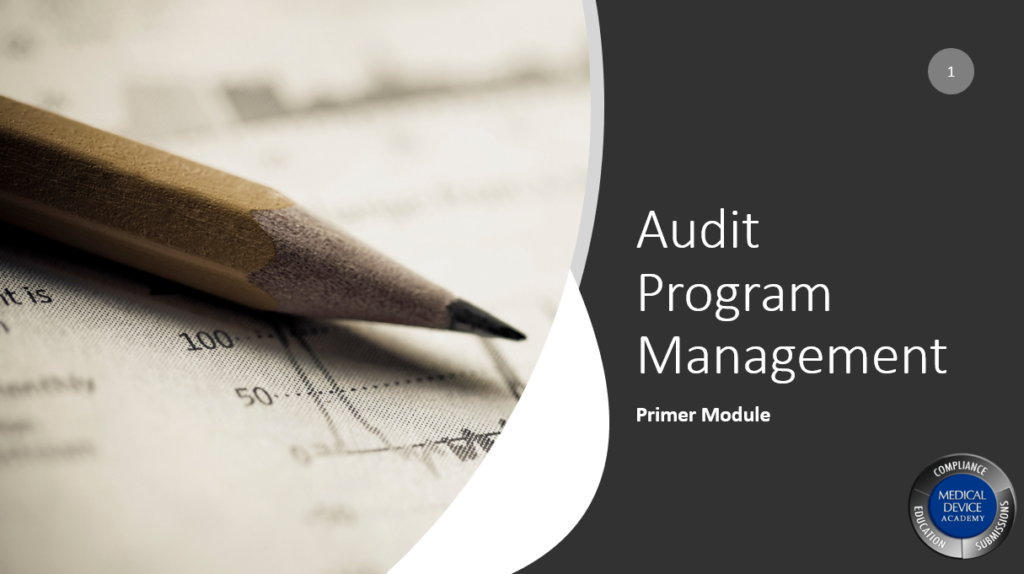Introductions, Objectives, Learning Outcomes, and Table of Contents

Welcome to the Primer Module for Audit Program Management!
Content Outline
Each topic page of this course will be presented in a similar format to this page. There will be an introduction to the material, followed by a video. The topic video is where the bulk of the information will be presented by the instructor. A summary of this will be provided in text and picture underneath the video as well as any additional or clarifying information that we here at Medical Device Academy felt could add value to your experience.
Our courses track your progress and performance as you complete them so be sure to take credit for all of your hard work and mark lessons as completed when prompted to do by clicking the ‘Mark Complete’ button at the bottom of the topic pages.
Introduction Video
Prerequisites
This course has no prerequisite.
This primer module is designed to provide entry-level information to better understand the process of Audit Program Management.
Course Objectives
This primer will introduce entry-level concepts of auditing and quality management systems outlined for the basic Audit Program Manager Competency Requirements outlined within ISO 19011:2018 Guidelines for auditing management systems.
An emphasis is placed on the medical device industry and will incorporate elements of ISO 13485:2016, and the U.S. FDA’s 21 CFR 820 Quality System Requirements.
A combination of text, and video is provided to teach in a manner that captures multiple learning styles, and the suggested practical exercises will generate immediate value for you and your Quality Management System.
Learning Outcomes
After successful completion of this Primer Module for Audit Program Management, students should have an introductory exposure to the outlined elements and areas of knowledge for Audit Program Manager competence in accordance with Clause 5.4.2 Competence of individual(s) managing audit programme of ISO 19011:2018. In particular:
- audit principles, methods, and processes;
- management system standards, other relevant standards, and reference/guidance documents;
- information regarding being an auditee and context in relation to developing an audit program;
- applicable statutory and regulatory requirements and other requirements relevant to the business activities of the auditees.
This course contains micro quizzes or miniature ‘progress checks’ designed to serve as a knowledge refresher. These checks are open book, use any resource that you have available to you. The idea is to either confirm knowledge retention of the topic or serve as a learning exercise to reinforce the information provided.
After successful completion of the course final exam, you will receive a certificate of completion to demonstrate your participation in the training. The culminating test at the end is designed to serve as an effectiveness check of the training. This certificate should be stored within your training file or used as part of your resume’ as a demonstratable record of training and education or competency maintenance.
Table of Contents
- Absolutes
- Acronyms
- Anatomy of an Audit- Definition
- Anatomy of an Audit- Terms
- Anatomy of an Audit- Party
- Anatomy of an Audit- Required?
- Anatomy of an Audit- Scope
- Anatomy of an Audit- Criteria
- Anatomy of an Audit- Method
- Anatomy of an Audit- Landmarks
- Anatomy of an Audit- Process
- Anatomy of an Audit- Nonconformities
- Management System and Relevant Standards
- Guidance Documents
- Regulations